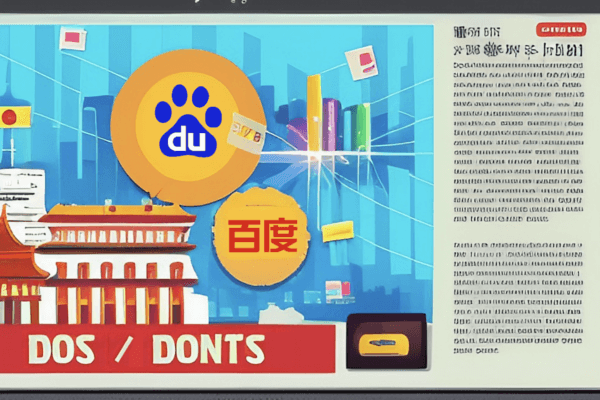Unlock the Full Potential of Transcreation for Effective Localization and Engagement in China!
- 2023-06-11
- Social Commerce
For companies looking to expand into the lucrative Chinese market, localization, and engagement with Chinese customers is key. Translation often doesn’t do the trick (we covered that in this article, having our Chinese native quality raters compare translated against transcreated content). Transcreation offers an incredibly powerful tool to enable businesses to tailor their messages for a culturally distinct audience in order to effectively convey meaning and engage. In this blog post, we’ll discuss the benefits of transcreation and provide actionable tips, and if modern generative AIs can already take over this job.
Let’s discuss Chinese Localization

We already used Google to translate our website into Chinese.
Although using Google Translate may make it easier and faster to produce “localized” content, this approach is not always effective when it comes to catering to the Chinese market. Raw machine translation does not take into consideration the nuances of a language or culture which can lead to misunderstandings and miscommunication. In our article comparing the different Chinese translation options, we already found out that human translation is definitely the better option.
Then let’s use a human native Chinese translator instead, ok?!
Although relying on native-speaking translators is certainly preferable to machine translation, it may not be enough to ensure that your message resonates with the target audience. Traditional translation usually adopts a sentence-by-sentence approach to keep the original logic in place, however, this can result in broken phrases and an overall text which doesn’t quite sound right.
So we need to create completely new website content?
No, you don’t have to create completely new website content. Transcreation is about taking the original text and adapting it for a Chinese audience without losing any of its meaning or essence. It takes into account cultural nuances so that the message not only gets accurately conveyed but also resonates better with the local language. So while some parts of your website content may need to be rewritten, the majority can remain unchanged while still being effective in engaging with customers in China.
Understand Cultural Cues: Leveraging Transcreation for Effective Localization in China
What is Transcreation?
Transcreation is the process of adapting your existing content to better cater for a localized audience. It involves cultural and linguistic experts who are familiar with local trends, customs and linguistic nuances in order to craft tailored messages that accurately convey meaning while also resonating culturally with the target audience. This ensures that communication between businesses and customers is maximized and customer engagement is optimized.
Here at Jademond Digital, we have developed a transcreation process, that goes as follows:
- Understand the original text
- Create a bullet point list with key messages and aspects
- Create a short description, of how the original text resonates with the reader
- Create a texter briefing using the bullet points list and the description of how the content appears to the audience
- Have a native Chinese speaker recreate the content directly in Chinese based on the briefing
Adapting Content to Local Tastes and Cultures (content involves text and visuals)
Transcreation is not limited to text. Images and visuals are also an integral part of content localization, as they can help convey your message and brand identity in a way that resonates with the target audience. Therefore, when localizing content for China, it is important to consider how images and visuals should be adapted. This could involve changing colors, font styles, symbols, faces or even replacing the images entirely. Additionally, translations of captions and other text elements should also be taken into account.
How to Create Culturally Appropriate Messages
When creating messages for localization in China, it is important to take into account key cultural elements. This includes avoiding any topics which can be considered sensitive or inappropriate such as politics or religion. It is also important to use language that resonates with the audience.
To successfully connect with Chinese customers, it’s important to craft culturally appropriate messages. For example, certain phrases and sayings that are popular in the UK, US, or other European countries may not have the same resonance among younger generations in China. Therefore, you need to find images and visuals that resonate with the local audience to effectively convey your message. Additionally, it’s beneficial to take into account local trends and customs when crafting messages so that your content feels relatable and engaging for the target audience.
Integrating Chinese Symbols & Visuals
In order to effectively localize your content for the Chinese market, you should also consider (considering means that it might not always or too often make sense – consider it!) integrating Chinese symbols and visuals. For instance, many popular Chinese brands incorporate traditional Chinese characters in their logos which can be a great way to connect with customers on an emotional level. Additionally, images of popular landmarks or cultural symbols can help create a sense of belonging and familiarity, making your content more attractive to the target audience.
Utilizing Native Translators for Quality Control
In order to guarantee that the localized content is both accurate and of exceptional quality, it is essential to enlist native-speaking translators for quality control. At Jademond Digital, we make sure to tap into our pool of experienced native Chinese speakers who are familiar with the language and culture; this enables them to capture subtle nuances, craft captivating phrases and accurately convey the intended message. To further confirm that the transcreated content is of an impeccable standard, we employ a different native speaker to verify the result and ensure it meets all expectations. This way, you can rest assured that your message will not only be correctly conveyed but will also resonate with the Chinese audience.
How transcreated content creates better SEO opportunities
By adapting their content to cultural cues and integrating visuals that resonate with Chinese customers, brands can create messages that are specifically tailored for the Chinese market – while simultaneously optimizing them for popular search queries and long-tail keywords. This ensures maximum visibility on major Chinese search engines, increased brand recognition and customer trust. Additionally, transcreation enables businesses to craft naturally sounding content that fits with the target keywords (WDF*IDF), thus making it easier to rank for relevant searches. In short, leveraging transcreated content when optimizing your website for China’s market can result in improved SEO opportunities and increased customer engagement.
Generative AIs: chatGPT and ERNIE bot can they beat Human?
When we asked the opinion of our team about AI versus humans when it comes to Chinese content creation, it was a split decision: some were skeptical of AI’s capabilities compared to humans while others thought its potential was vastly underrated.
We chose not to tell our authors or quality raters what they were really being tested on before beginning and instead let them believe they were picking out the best copy for our Chinese website – unbeknownst to them, an AI was secretly competing against them!
In our previous article about Translation vs Transcreation, we outlined the different types of texts created — including transcreated ones. Now, let’s reveal which transcreated text was written by a human and which one was written by an AI! Our authors and quality raters were unaware they were competing against AI when selecting what they thought was the best copy for our Chinese website.
Here are the detailed results, we did not expose in the initial article:

We had three native Chinese speakers and three generative AIs to write the new text. We gave all three the same briefing being built of a) a list of bullet points with the key messages this short text short carry and a short instruction on the tone and what the text was meant for.
The results of our test were astonishing – it was a photo finish between the AI and human content! On a recommendation scale from 1 to 100, the best-rated text (written by one of our native speakers) only had three points over the two texts on position 5 (ERNIE bot and our third native speaker both tied for this spot). We left the transcreated text at this stage for direct comparison between native speakers and generative AIs, so that no additional optimization was done. Surprisingly enough, position 2 was taken by chatGPT with GPT-3.5 (we expected GPT4 to do better than GPT-3.5) while our second native speaker occupied position 3. ChatGPT with GPT-4 was in fourth place, and Baidu’s ERNIE bot tied our third native speaker for the fifth spot. This shows that generative AIs are quickly gaining ground on humans when it comes to Chinese content creation!
Our conclusion on AI supported Chinese Transcreation
After our test, we are confident that generative AIs can be valuable assets for businesses looking to craft effective Chinese content. If preparational steps such as understanding the original content and creating a comprehensive briefing are done by humans, AIs can generate remarkably human-like content.
We don’t need to make a specific recommendation on which AI should be used; ERNIE bot and chatGPT (both GPT-3.5 and GPT-4) performed remarkably well and was extremely close in terms of rating! This clearly shows that generative AIs have great potential when it comes to creating effective Chinese content.
It is important to remember that AI cannot think independently; any generated text should always be double-checked and edited by native speakers in order to ensure accuracy and fluency.
AI-generated transcreated content can provide an excellent foundation for further refinement and optimization – leading to better SEO opportunities and increased brand recognition with local audiences!
Do you need assistance on your China Marketing? Or would you just schedule a free call to discuss your options? No matter of SEO for China, Search Ads, Social Media or Chinese E-Commerce, just send us a message!
Recommended Articles:








